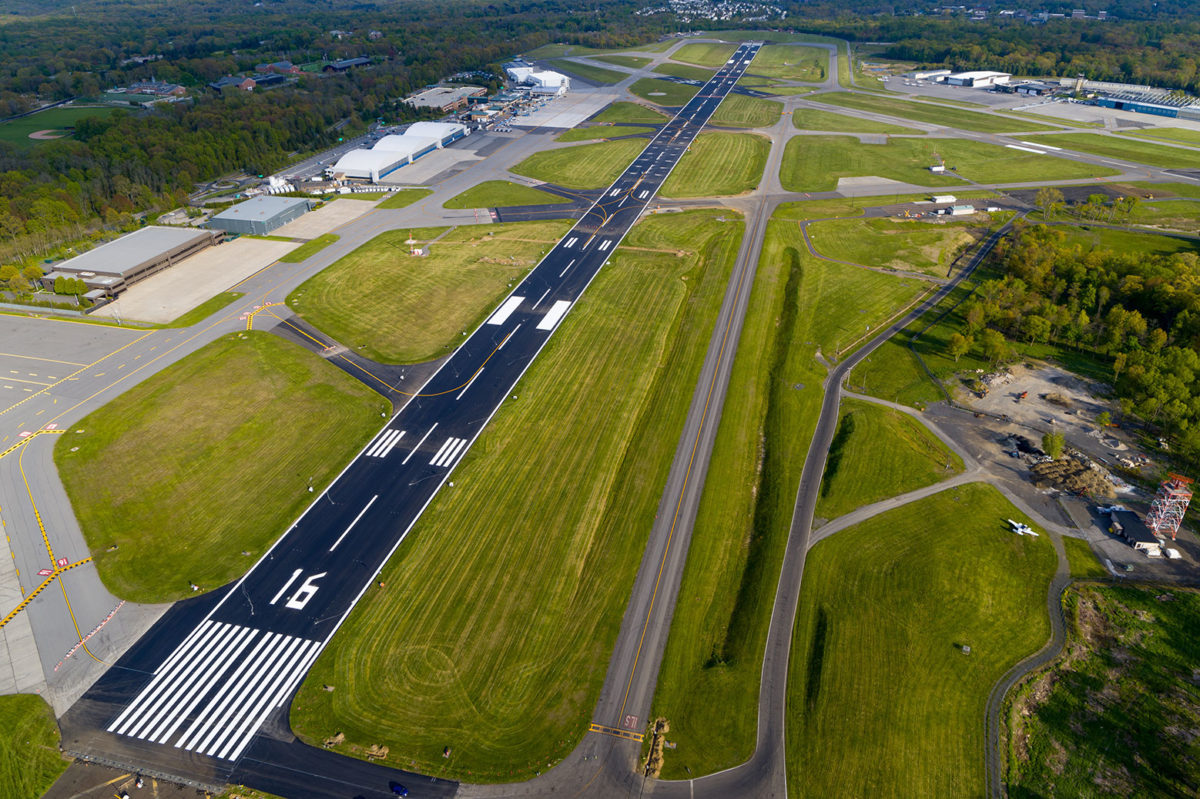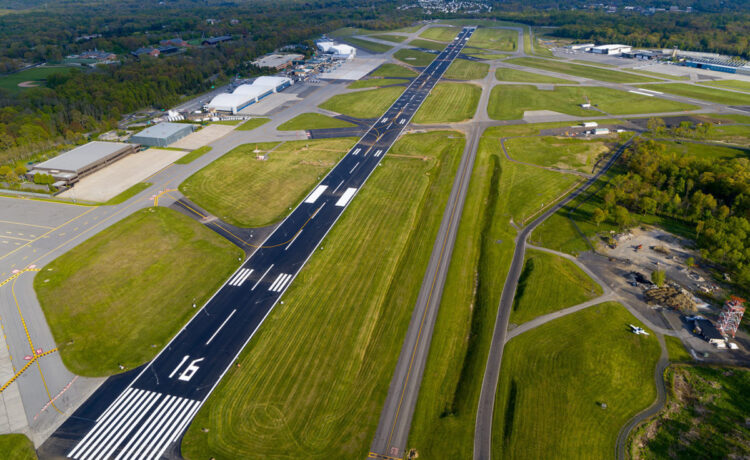The Westchester County Legislature has given its approval for the county to seek federal funding for the design of various runway improvements at the Westchester County Airport. County Executive George Latimer had recommended that the legislature pass a measure that would authorize the county to apply to the Federal Aviation Administration (FAA) for funds to cover most of the cost of preparing designs for a runway rehabilitation capital project.
The project would be for the airport’s main runway, 16/34, which is 6,549 feet long by 150 feet wide. The designation 16/34 refers to the runway’s directional orientation, with aircraft facing 160 degrees when landing or taking off in a southerly direction on Runway 16 and 340 degrees when landing or taking off in a northerly direction on Runway 34.

It’s estimated that the design phase of the project would cost $636,196 and that the county would be hiring a consultant to do the work. The FAA is being asked to provide 90%, or $572,576 of the amount needed. The New York State Department of Transportation is expected to contribute $31,810 and the county would contribute the remaining $31,810.
Designs would be created for: the replacement of runway edge and end lighting; runway centerline and touchdown zone fixtures; elevated signage; runway end blast pads; and new runway shoulders on each side, including associated drainage improvements.
The capital project is intended to be is undertaken as part of the FAA’s Airport Capital Improvement Program, which is an annual entitlement-based funding source directly linked to commercial passenger volume. The FAA’s funding can be used for projects that help assure safety in aircraft movement at an airport.
Design of the project for the county’s airport is anticipated to be completed by March 31 of next year.
Runway 16/34 was repaved and enhanced in the spring of 2020 in a $21.7 million project with the federal government picking up about $19 of the cost. A that time, Latimer pointed out that unlike a municipal street or highway, a runway must be capable of carrying the heavy weight of airplanes, withstand stresses of landings and takeoffs and remain free of hazards such as potholes.













